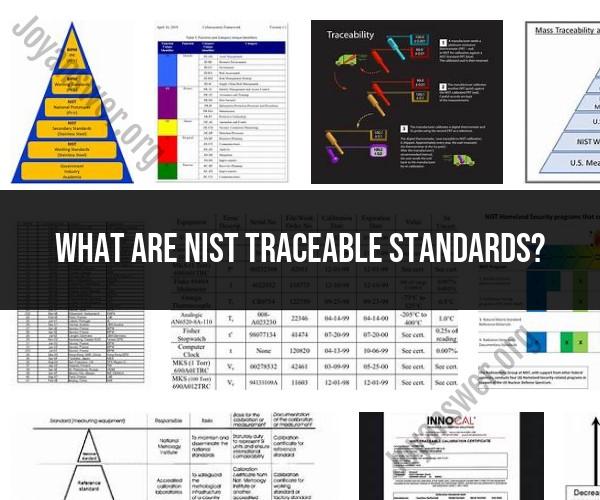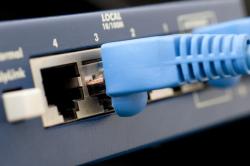What are NIST traceable standards?
NIST traceable standards are measurement standards and calibration artifacts whose accuracy can be traced back to the National Institute of Standards and Technology (NIST) in the United States. The term "traceable" indicates that the measurements made using these standards are linked to NIST's primary standards, which are considered the most accurate and reliable standards in the country.
Here's how NIST traceability works:
Primary Standards: NIST maintains a set of primary standards that serve as the foundation for various measurements. These primary standards are highly accurate and provide reference points for specific physical quantities, such as time, length, mass, temperature, and more.
Secondary Standards: Secondary standards, also known as transfer standards, are measurement standards that are directly calibrated against NIST's primary standards. These secondary standards are used by calibration laboratories, industries, and institutions to calibrate their own measuring instruments and equipment.
Traceability Chain: When a measurement is made using a secondary standard, its accuracy is traceable back to NIST through a documented and unbroken chain of calibrations. Each step in the chain involves a calibration laboratory that has its instruments calibrated by a higher-level standard, eventually leading back to NIST's primary standards.
Calibration Certificates: Calibration laboratories issue calibration certificates that detail the measurement process and confirm the traceability of the measurements to NIST standards. These certificates provide assurance of the accuracy and reliability of the measured values.
NIST traceable standards are essential in various industries and fields where precise measurements are critical, such as manufacturing, healthcare, aerospace, and research. They ensure that measurements made by different organizations and laboratories are consistent and reliable, facilitating quality control, compliance with standards and regulations, and the exchange of accurate measurement data.
By using NIST traceable standards, organizations can have confidence in the accuracy of their measurements and the comparability of results across different laboratories and instruments, ultimately contributing to better product quality, safety, and scientific research.
Definition of NIST Traceable Calibration Standards
NIST traceable calibration standards are reference materials that have been calibrated to the National Institute of Standards and Technology (NIST). NIST is the nation's measurement standards laboratory, and its calibrations are recognized as the highest standard of measurement accuracy.
NIST traceable calibration standards are used to calibrate other measuring instruments and devices. This ensures that all of the measuring instruments and devices are calibrated to the same standard, and that their measurements are accurate.
NIST traceable calibration standards are used in a wide range of industries, including manufacturing, healthcare, energy, and transportation. They are used to calibrate instruments and devices such as:
- Thermometers
- Balances
- Mass spectrometers
- Voltage meters
- Current meters
- Flow meters
- Pressure gauges
- Hardness testers
Purpose of NIST Traceability for Accurate Measurements
NIST traceability is important for ensuring the accuracy of measurements. When a measuring instrument or device is calibrated to a NIST traceable calibration standard, it means that its measurements are traceable to the highest standard of measurement accuracy in the United States.
NIST traceability is important for a number of reasons, including:
- To ensure the quality and safety of products and services. Many products and services require accurate measurements to ensure that they meet quality and safety standards. For example, food manufacturers use NIST traceable calibration standards to ensure that their products meet food safety standards.
- To support innovation and economic growth. Many industries rely on accurate measurements to develop new products and services. For example, the pharmaceutical industry relies on accurate measurements to develop new drugs and therapies.
- To protect consumers and the environment. Accurate measurements are important for protecting consumers from fraud and from products that do not meet safety standards. Accurate measurements are also important for protecting the environment from pollution and other hazards.
Processes for Accrediting Measurement Standards to NIST
There are two ways to have a measurement standard accredited to NIST:
- Direct accreditation: NIST directly accredits a limited number of high-level measurement standards laboratories. These laboratories are accredited to calibrate measurement standards for other laboratories and industries.
- Indirect accreditation: NIST indirectly accredits measurement standards laboratories through accreditation bodies. Accreditation bodies are private organizations that are accredited by NIST to assess and accredit measurement standards laboratories.
To be accredited to NIST, a measurement standards laboratory must meet certain requirements, including:
- Having a quality management system in place
- Having qualified personnel
- Having the necessary equipment and facilities
- Participating in proficiency testing programs
Once a measurement standards laboratory is accredited to NIST, it is regularly assessed to ensure that it continues to meet the accreditation requirements.
NIST traceability is an important tool for ensuring the accuracy of measurements. By using NIST traceable calibration standards, industries and organizations can be confident that their measurements are accurate and reliable.













